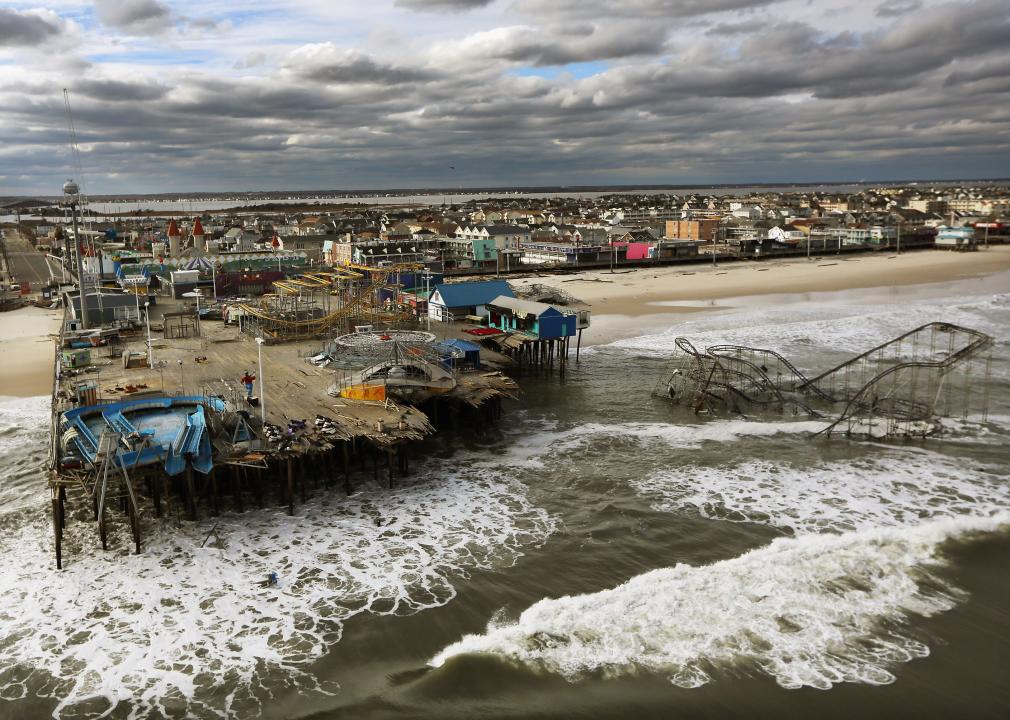How climate change impacts extreme weather across America
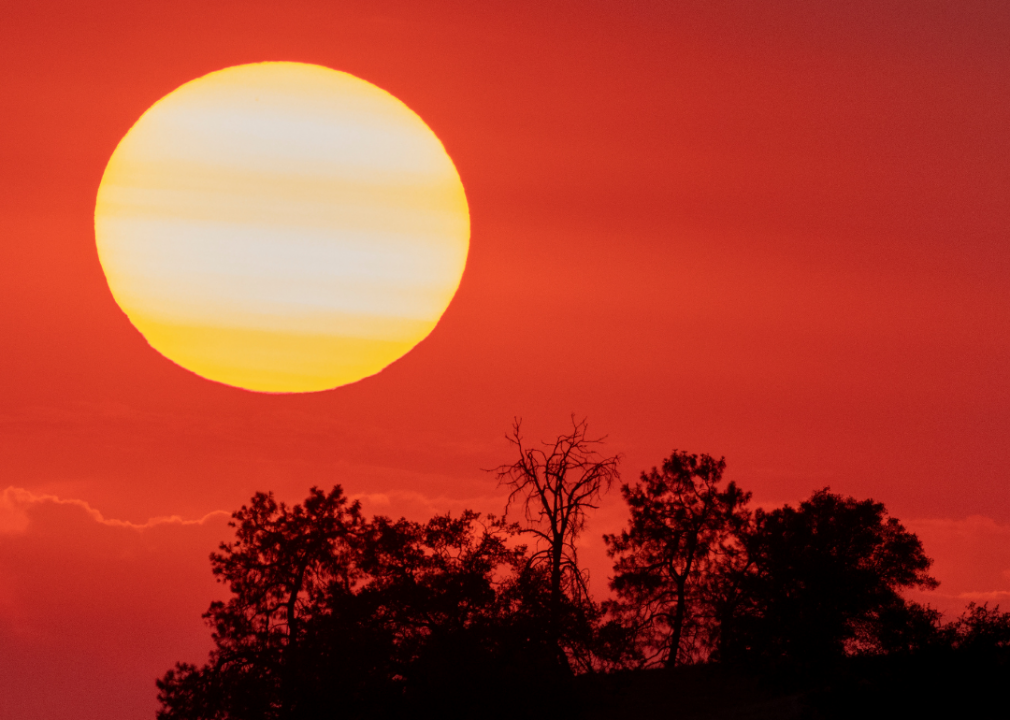
David McNew // Getty Images
How climate change impacts extreme weather across America
The phrase “global warming” may sound fairly innocuous. A few degrees of temperature difference spread out over a century doesn’t sound like much to many people, and the most compelling images associated with the phenomenon often involve glaciers and polar bears, which makes the threat seem distant.
In November 2021, delegates from nearly 200 countries met in Glasgow for the COP26 conference to discuss and negotiate policy around climate change. Significant victories included halting and reversing deforestation in 90% of the world’s forests, cooperation between the U.S. and China to curb emissions, and language specifying the phasing down of coal—the first language of its kind in a U.N. climate pact.
But there were shortcomings, too. Climate financing was a major pain point, with no financial relief provided to the smaller countries that have disproportionately borne the burden of the climate havoc that large countries like the U.S., China, and India have wreaked. No amount of novel language or diplomatic pageantry can change what people around the world are experiencing. One doesn’t need to look very far to see the impact of inaction. Pick any spot in the U.S. and it’s most likely been impacted by a rapidly changing climate.
Although it’s unclear if there is a direct correlation between climate change and phenomena like tornadoes and thunderstorms, there is an established and undeniable link between rising temperatures and heat waves, increased precipitation, reduced snowpack, flooding, fires, and intense tropical storms and hurricanes. Some climate change-related weather patterns will hinder energy production while simultaneously placing a greater demand on energy providers. Others will bring massive storms to regions that were historically spared from their wrath, as New York and New Jersey experienced with Hurricane Sandy in 2012.
In other cases, extreme weather will trigger water shortages like the kind that have recently plagued the Southwest and much of the rest of the country. Food shortages likely will lead to higher prices at the grocery store, property values will decline in the hardest-hit areas, and millions of acres of forest will burn or die. It’s important to note that these are not hypothetical situations. Every scenario just described has already happened, is happening, and/or is predicted to happen with greater frequency and ferocity in the near future.
Read on to learn about climate change and how it’s affecting weather and other natural phenomena in the United States, which regions are being hit the hardest, and where these weather events are most prevalent.
You may also like: States with the worst droughts
![]()
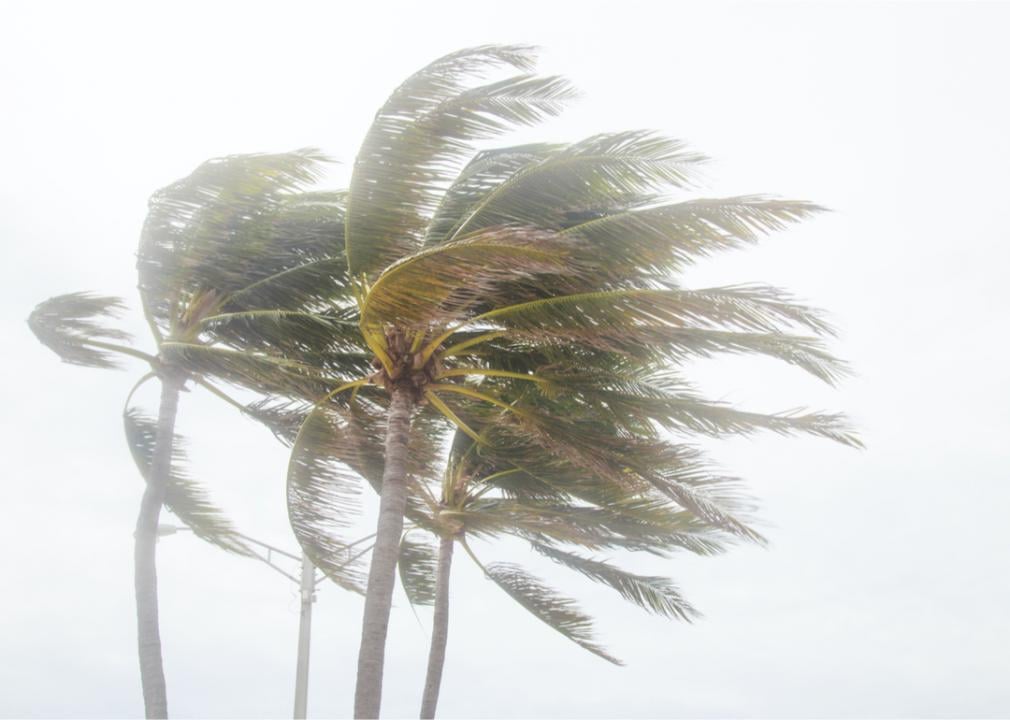
FotoKina // Shutterstock
Climate change is making hurricanes more powerful
According to the Center for Climate and Energy Solutions (C2ES), it’s hard to tell if climate change will lead to more hurricanes and significant tropical storms. What is clear, however, is that hurricanes are becoming more powerful as temperatures rise. The last two to three decades have seen an increase in the frequency of intense hurricanes, and scientists predict that the strongest storms, Category 4 and 5 hurricanes, will increase by 45% to 87% in the future. In 2020 alone, the U.S. experienced 14 hurricanes—eight more than average—during the June 1 to Nov. 30 season in the Atlantic basin.
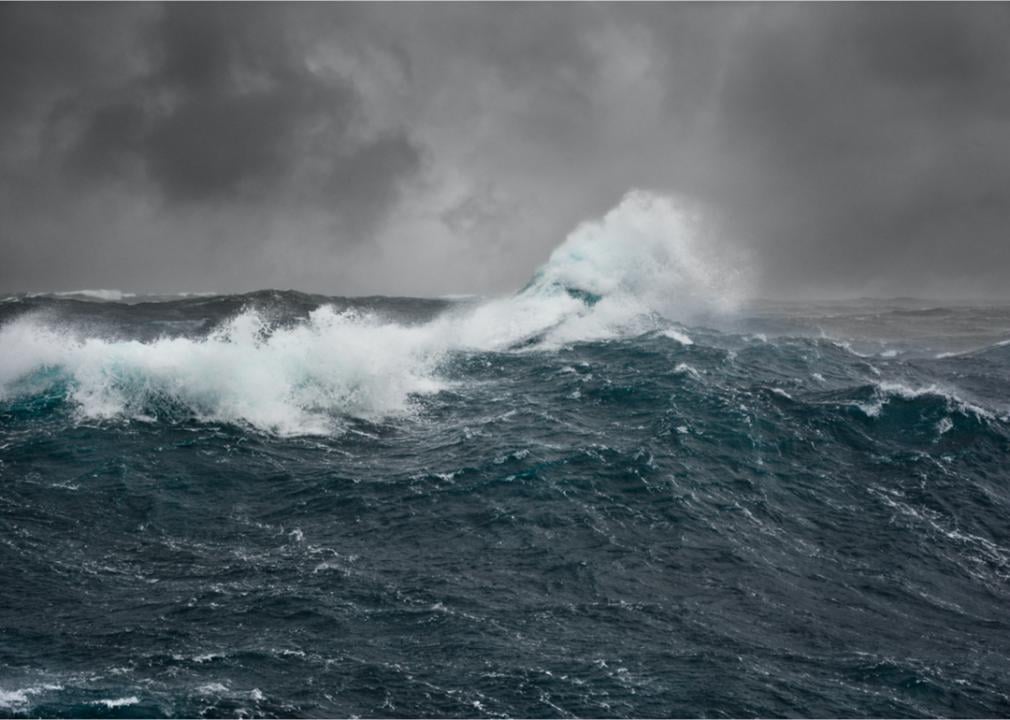
andrejs polivanovs // Shutterstock
Sea surface temperatures are rising
Hurricanes are becoming more intense, in part, because of the effect climate change has on ocean surface temperatures, according to C2ES. Tropical storms and hurricanes gain power over warm water, and higher surface temperatures are expected to increase average hurricane wind speeds by 2% to 11%, while also generating 20% more precipitation.
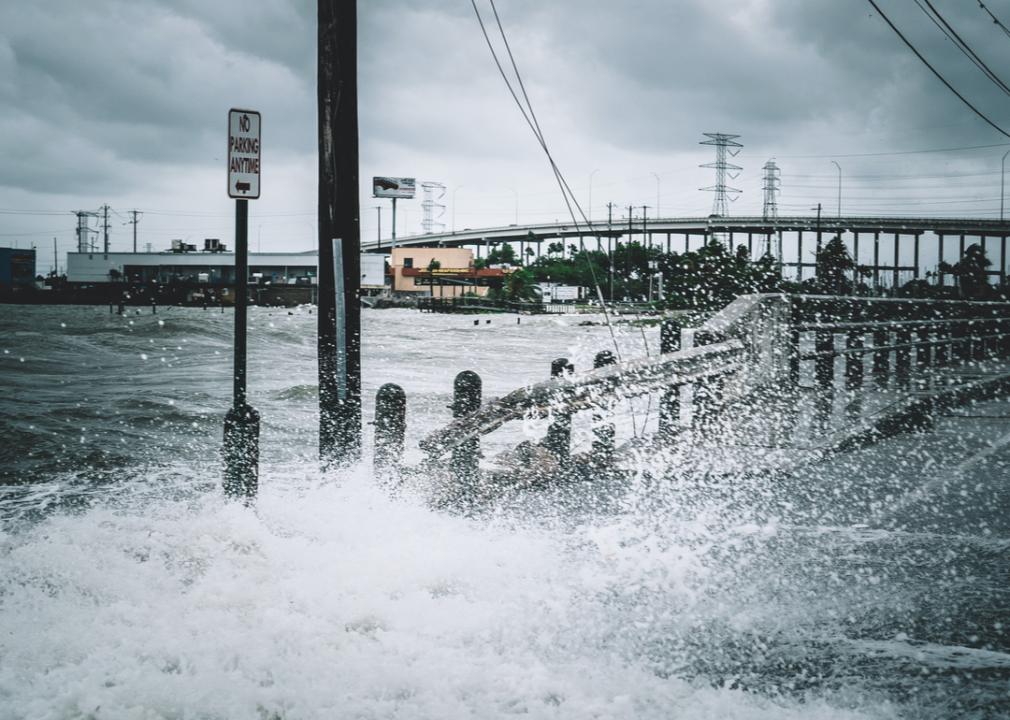
Cire notrevo // Shutterstock
Rising sea levels make storm damage more severe
Not only are rising sea levels making hurricanes more powerful, according to C2ES, but they’re resulting in hurricanes that cause more damage. With sea levels expected to rise by one to four feet over the next century, coastal flooding, the main contributor from hurricane damage, has been, and will continue to be, amplified.
Win McNamee // Getty Images
Climate change intensified Hurricane Harvey
The data regarding climate change and hurricane intensity are not just numbers on a fact sheet or images on a scientific model. According to the Union of Concerned Scientists (UCS), “human-caused climate change” made Hurricane Harvey’s record rainfall, which devastated Houston in 2017, three times more likely and 15% more intense.
Mario Tama // Getty Images
Climate change caused greater flooding in Hurricane Sandy
While Southern and Gulf states have long grappled with violent hurricanes, climate change has opened up broader regions of the country to storm devastation. Exceptionally high lunar tides no doubt contributed to the destruction caused by Hurricane Sandy across New York and New Jersey in 2012, according to the UCS. Severe flooding affected 27 square miles that would have been unscathed had the storm hit in 1880—man’s effect on climate change has forced an 8-inch rise in global sea levels since then.
You may also like: States with the most homes at risk of coastal flooding
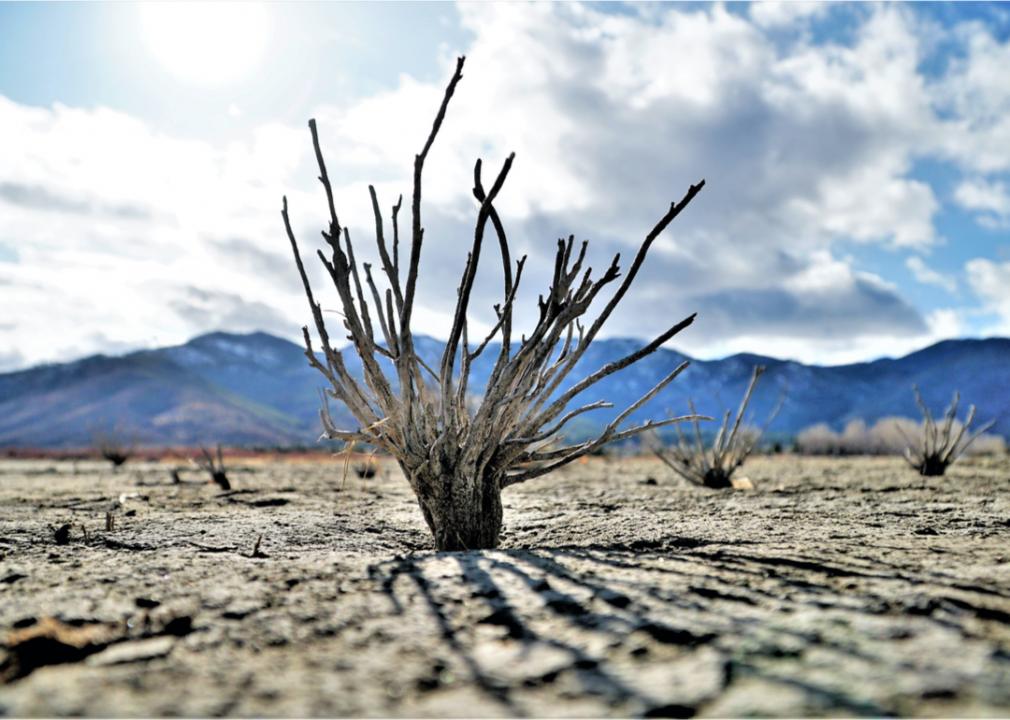
Michael Barajas // Shutterstock
Droughts will be more frequent and more intense
Like much of the world, climate change is making droughts more likely and more severe in the United States, according to C2ES. Even areas that don’t experience precipitation shortfalls will struggle with increased water demands and faster evaporation as temperatures rise. Recent studies suggest that the Western U.S. is in another drought after experiencing the worst megadrought—unusually severe period of drought lasting at least 20 years—of the last 1,200 years between 2012 and 2016.
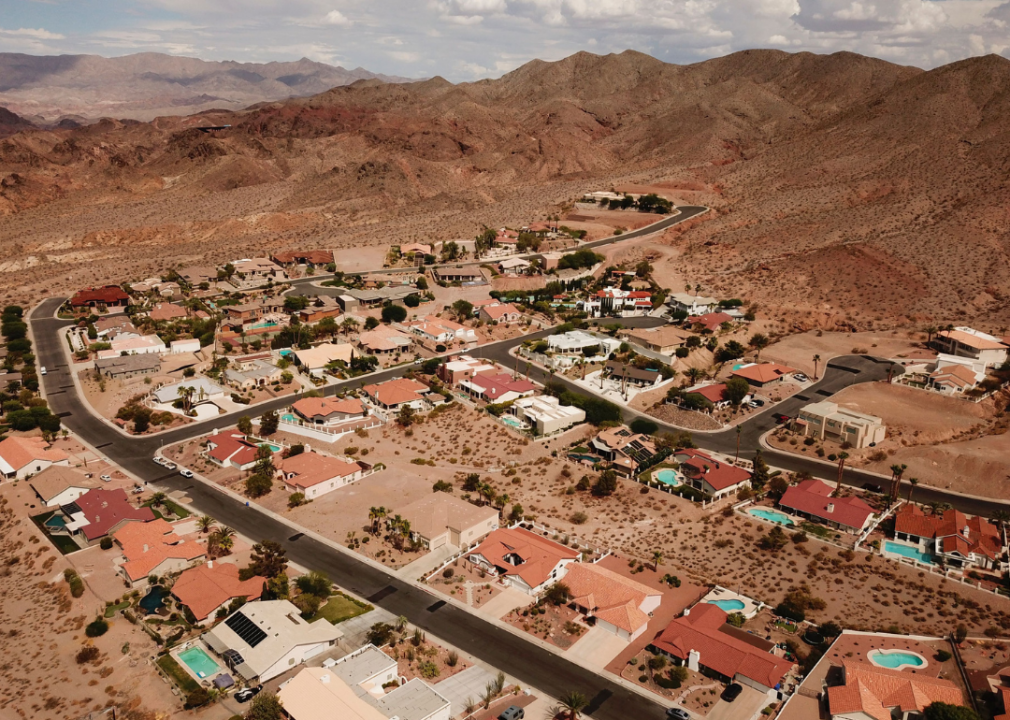
PATRICK T. FALLON/AFP via Getty Images
The Southwest will be hit particularly hard by climate-induced drought
Just as with hurricanes, drought in the United States has gotten worse over the past few decades compared with virtually any other period on record, and the Southwest will likely be the hardest-hit region moving forward.
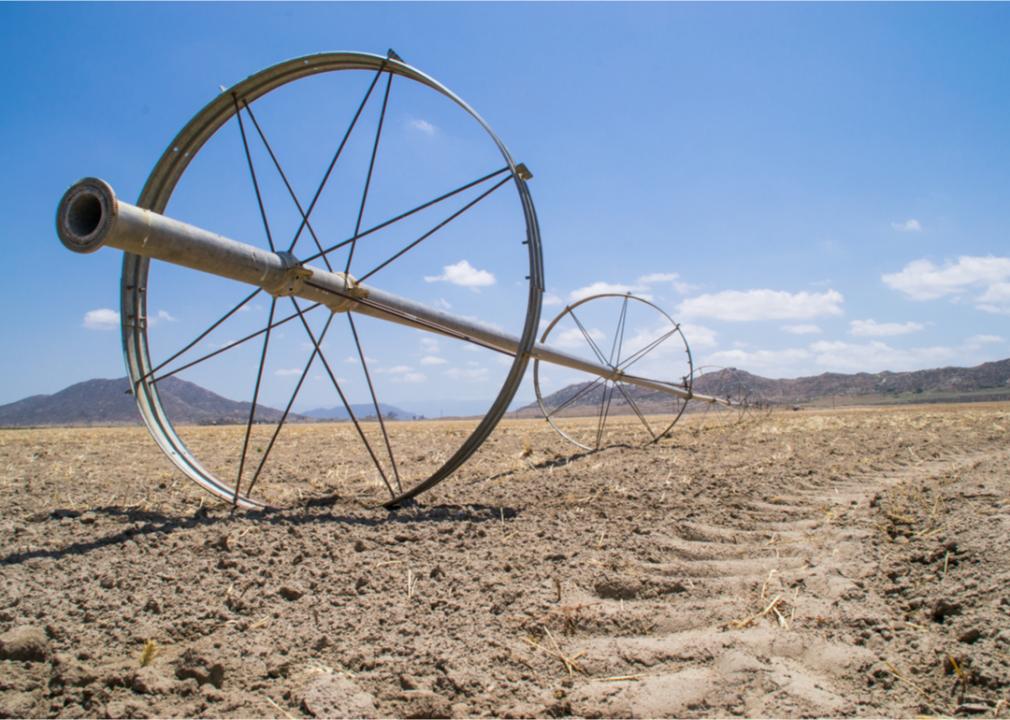
Eddie J. Rodriquez // Shutterstock
Increased drought could lead to food instability
Increased food prices and food insecurity likely will result as droughts intensify in both frequency and severity, according to C2ES. When droughts hit so-called breadbasket regions, as they did in 2012, damaged agriculture operations could lead to food shortages. At the height of the 2012 drought, the U. S. Department of Agriculture (USDA) declared 2,245 counties, or 71% of the United States, to be drought disaster areas, as corn, soybean, wheat, and livestock production all were diminished.
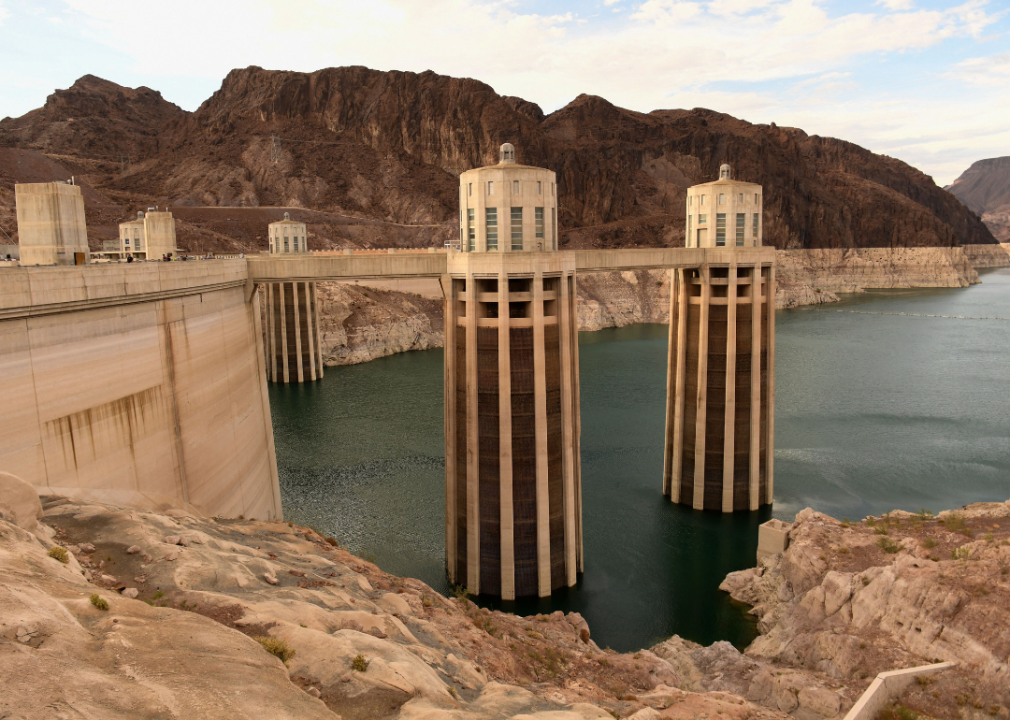
PATRICK T. FALLON/AFP via Getty Images
Severe drought will likely impact energy supplies
According to C2ES, increased droughts caused by climate change could hamper energy production and cause energy costs to rise. Electric plants will have a harder time procuring the large stores of cooling water required to maintain safe operations and hydroelectric power might be diminished, all while more water is needed to grapple with drought and heat waves.
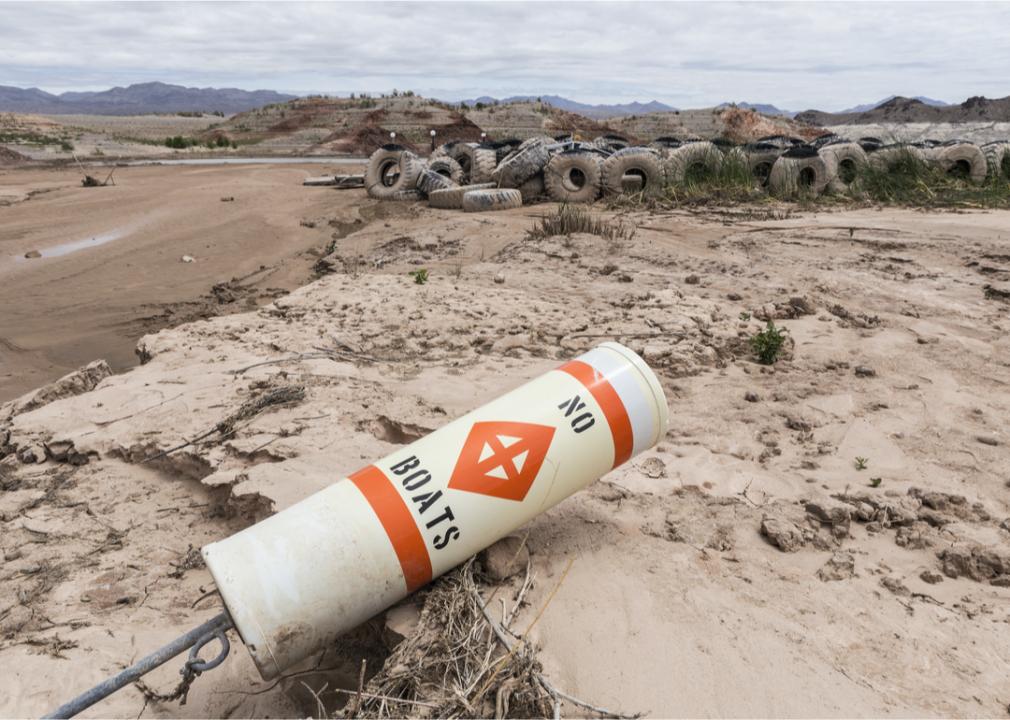
trekandshoot // Shutterstock
Drought could squeeze river-based transportation and commerce
As climate change drives more severe and frequent droughts, commerce rivers will begin to dry up, according to C2ES. Transport barges, for example, require a depth of at least 9 feet of water. In 2013, just after the drought of 2012, the U.S. Army Corps of Engineers had to blast and dredge a key portion of the Mississippi River to make barge transport possible again.
You may also like: 50 space terms for understanding the universe
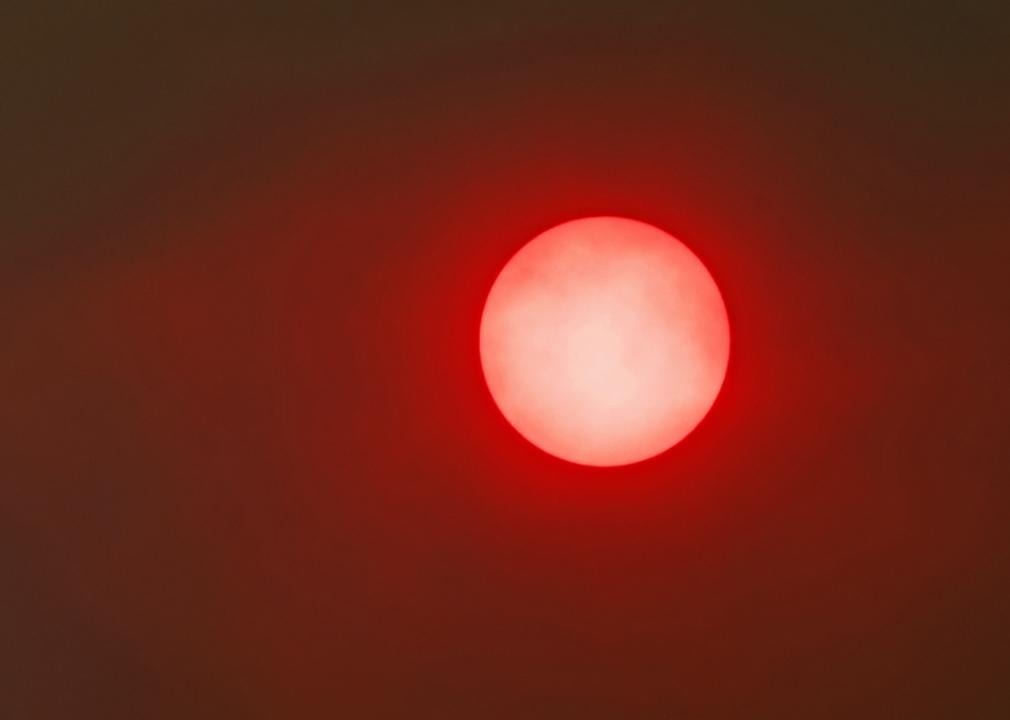
Mystic Stock Photography // Shutterstock
Climate change causes drought, which strengthens wildfires
Drought conditions have caused or exacerbated already widespread and often-deadly wildfires, particularly in the West. In the past decade alone, thousands of homes and millions of acres were lost to wildfires, which often coincided with periods of drought.
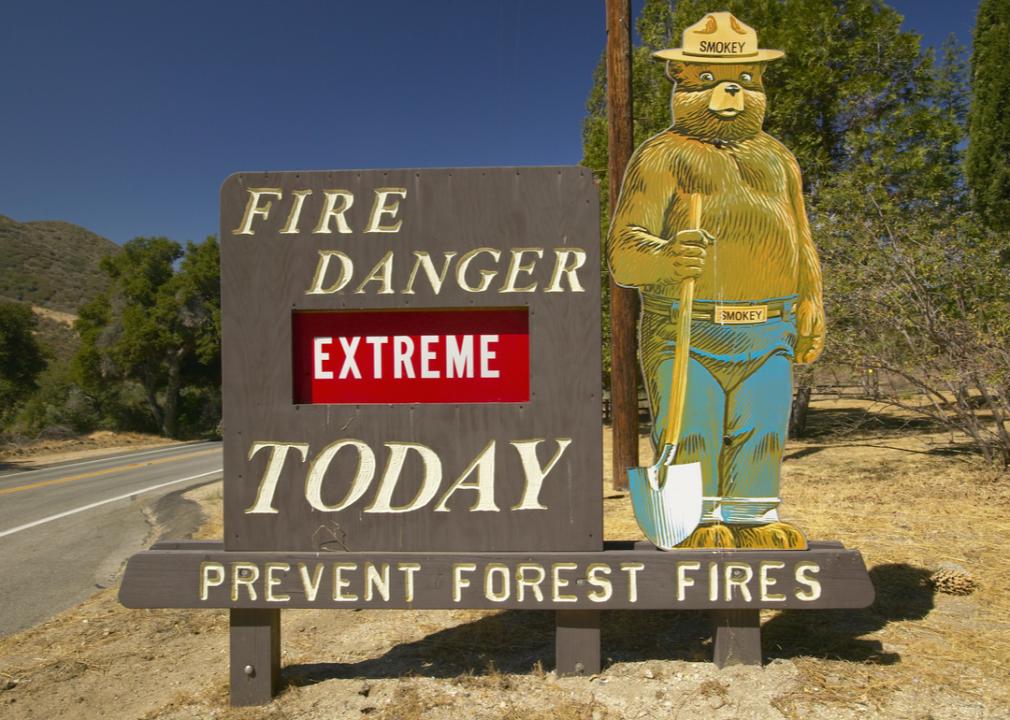
Joseph Sohm // Shutterstock
Wildfires are more frequent and severe even without drought
Climate change intensifies wildfires even when drought isn’t a factor. Just as with hurricanes and drought, the number and severity of wildfires have increased dramatically as the planet warmed over the past several decades. According to C2ES, fire season is now 78 days longer than in 1970, and significant wildfires burn twice the area now than they did then.
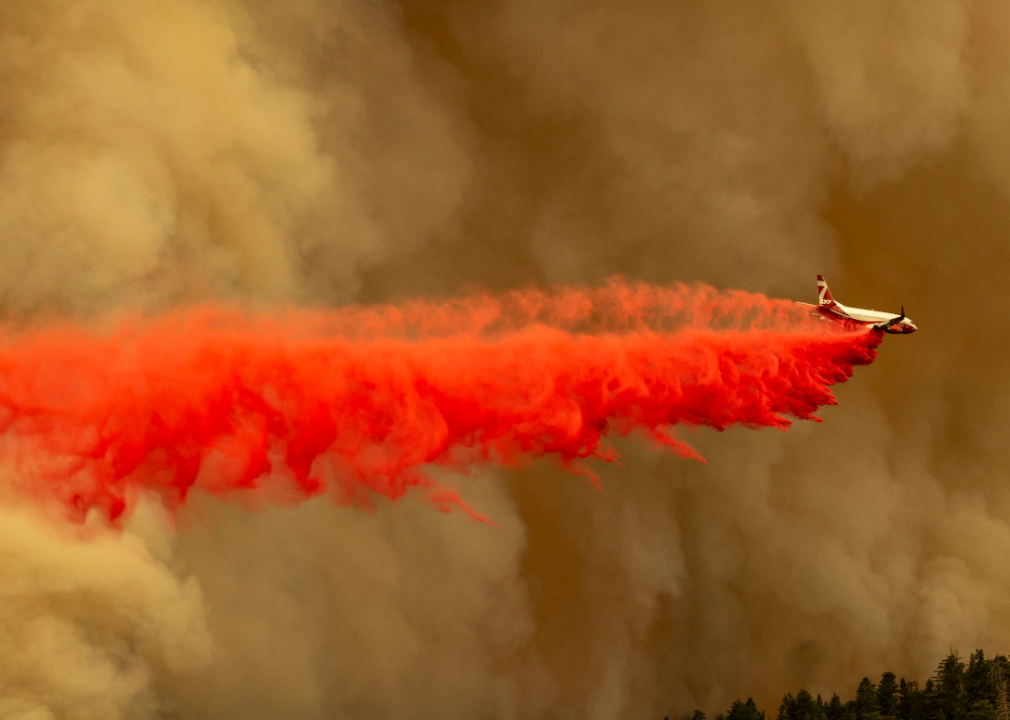
David McNew // Getty Images
Climate change makes fires more widespread and expensive
In the 21st century alone, 11 forest fires caused at least $1 billion damage each in the United States, reports C2ES. In 2020 alone, more than 58,000 wildfires scorched 10.3 million acres of land in the U.S.—the most on record.
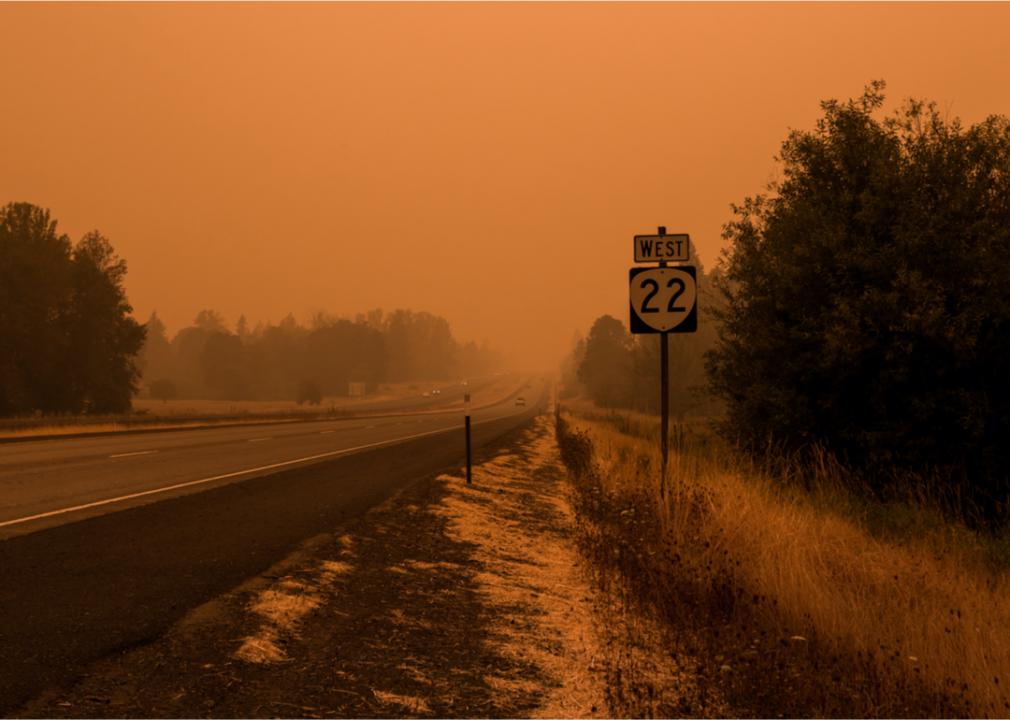
Victoria Ditkovsky // Shutterstock
The West will continue to suffer the most fire destruction
Nine of the 20 largest wildfires in California’s history happened over the course of 2020 and 2021. According to the National Interagency Fire Center, California recorded more 10,400 fires and nearly 4.1 million acres of scorched land in 2020. For the last decade, California has been setting new records almost annually for the number and intensity of wildfires. And while it is not the only state in the Western U.S. being impacted—three of the largest fires in Colorado’s history happened just in 2020, for example—it is a representation of the increasing danger the region faces.
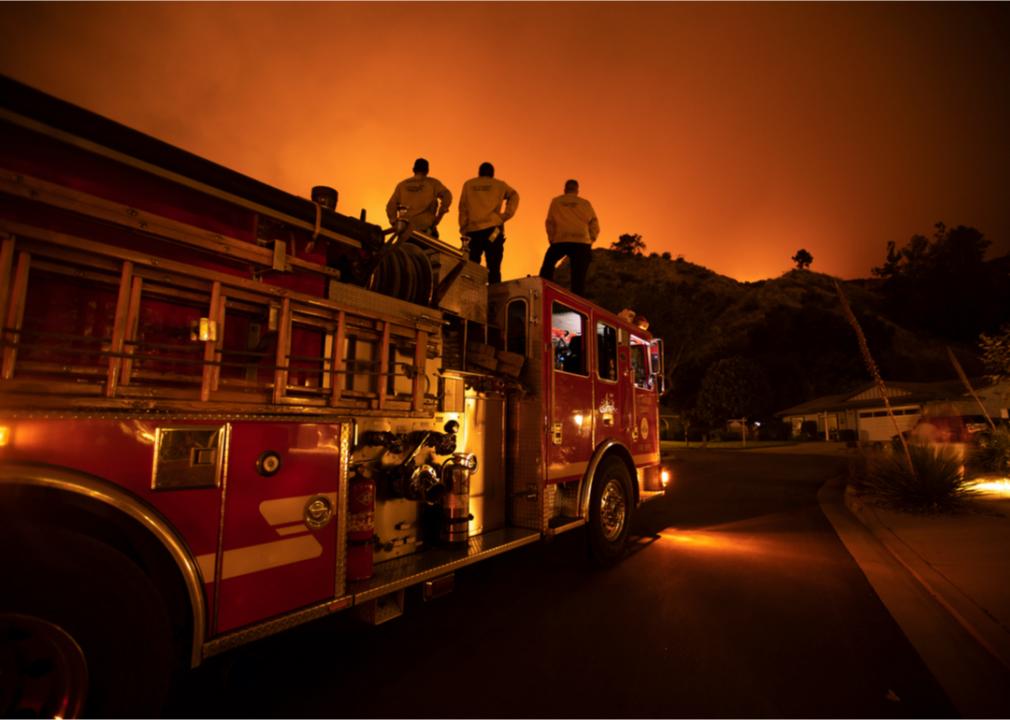
Matt Gush // Shutterstock
Fires strain budgets—and speed up climate change
Climate change-induced wildfires have forced the U.S. Forest Service to increase its fire suppression expenditures from 16% of its budget to 50%. Contributing to the destructive cycle, fires release large amounts of carbon dioxide, which in turn hastens climate change.
You may also like: The 57 women who have won the Nobel prize
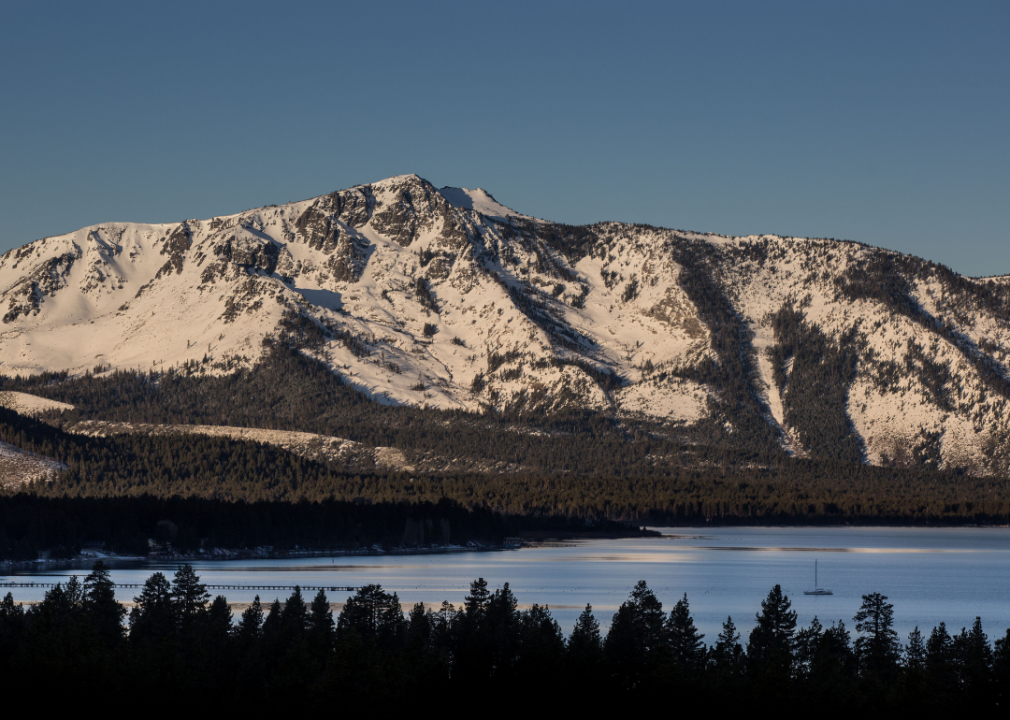
George Rose // Getty Images
Winter snowpack is declining
Hubbard Brook Experimental Forest in New Hampshire conducted one of the longest-running studies of any kind. The 60-year research program concluded that winter snowpack—compressed, accumulated snow—is declining, a phenomenon that can have catastrophic effects on forest health. Reduced snowpack also encourages drought, as snowpack that never forms in the winter never turns to runoff in the spring. People in the western U.S. depend on melting mountain snowpacks for drinking water, hydropower, and irrigation.
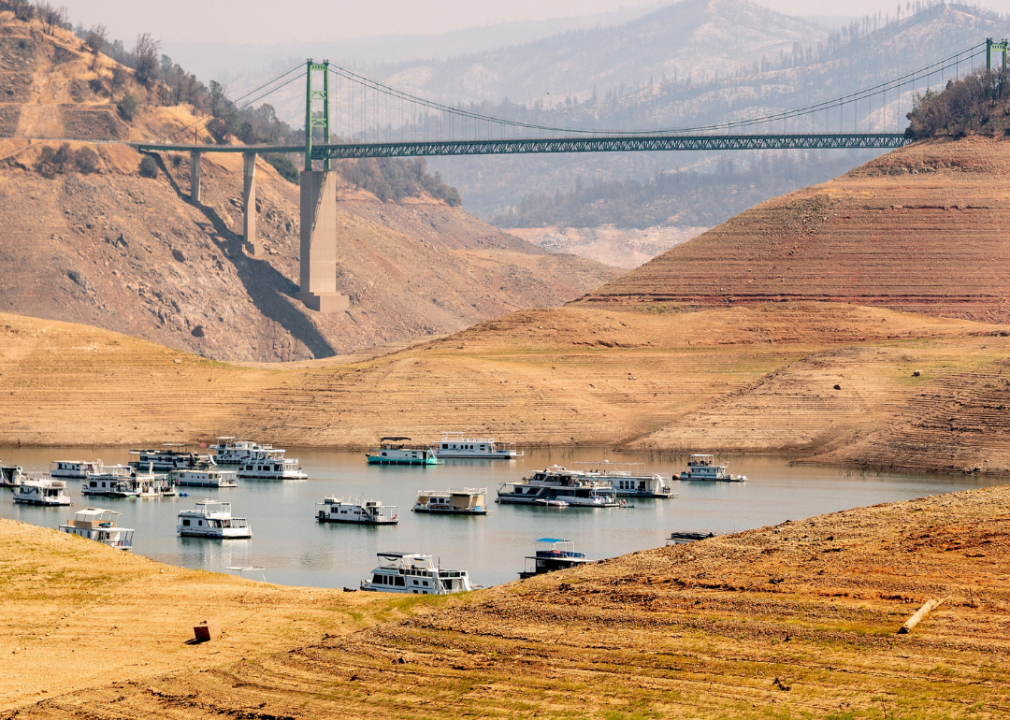
JOSH EDELSON/AFP via Getty Images
More water shortages could plague California and the West
Water rights have been a hot-button political issue in California for generations, a dynamic that climate change will almost certainly exacerbate. The frozen reservoir atop the Sierra-Nevada Mountains is one of the most important snowpacks in the country, accounting for 60% of California’s fresh water and serving as the drinking water source for more than 23 million people across the state, including in Los Angeles, San Francisco, and San Diego, according to UCLA research. With snowpack reserves expected to drop by 64% by the end of the century, when average temperatures there will be 7 degrees higher in the crucial spring melting season, California’s current water crisis likely will seem mild by comparison.
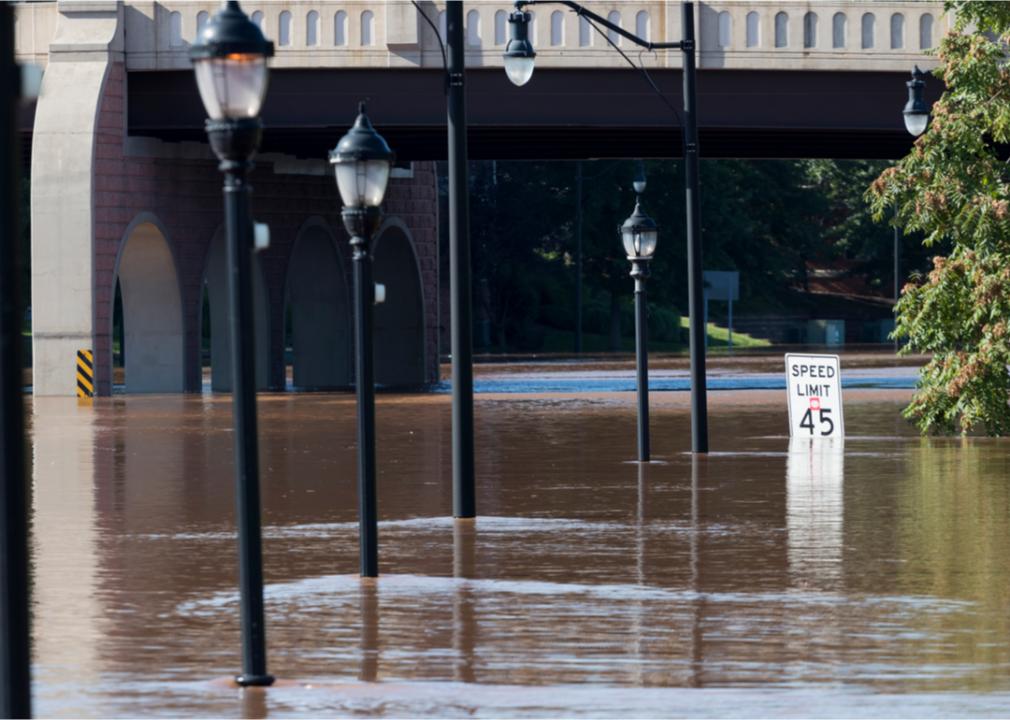
Benjamin Clapp // Shutterstock
Coastal flooding will increase, especially in the Northeast
Hurricane storm surges aren’t the only reason rising sea levels are one of the most dangerous results of climate change. Rising seas, caused mostly by melting glaciers and ice sheets, are a direct cause of increasingly extreme coastal flooding, particularly in the Northeast. According to “Climate Change Impacts on Extreme Weather,” a white paper report compiled for AIR Worldwide by two atmospheric and environmental researchers, the type of flooding New York City experienced for an average of 19 days a year between 1920 and 1970 now occurs 99 days a year.
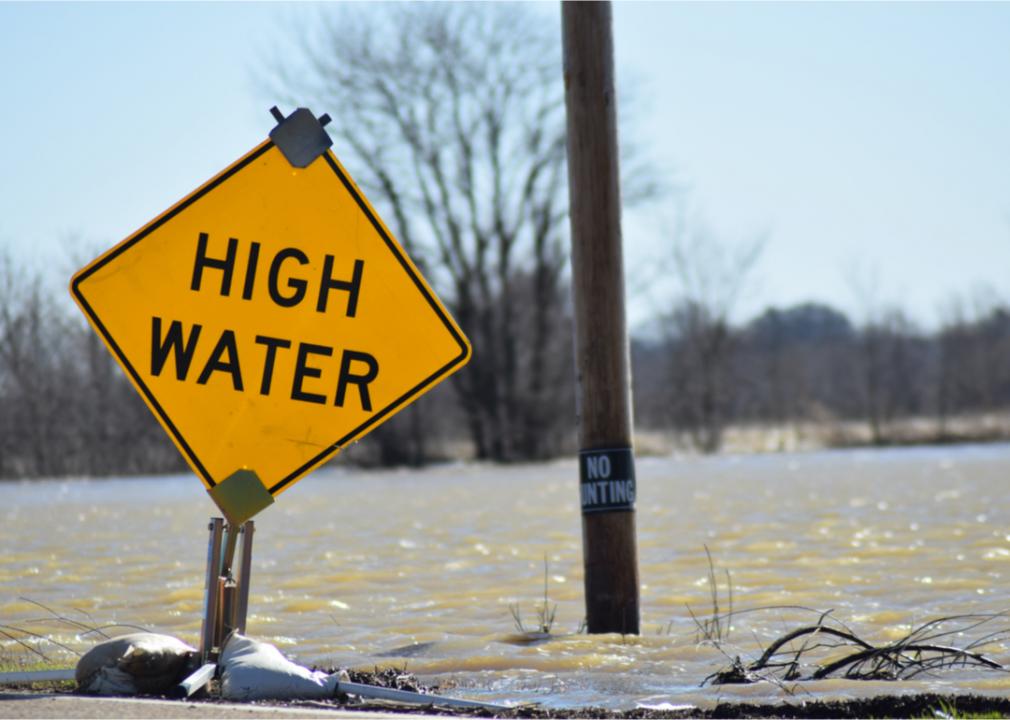
Rae Chandler // Shutterstock
Inland flooding is more common and intense
According to the Union of Concerned Scientists, “many inland areas in the U.S. are flooding more often. Heavy rainfall caused by climate change as well as human alteration of the land are the main drivers of this trend.” That’s because global warming causes more water to evaporate and warmer air can hold more water, so when it rains, the rainfall is heavier and flooding is more likely and more severe.
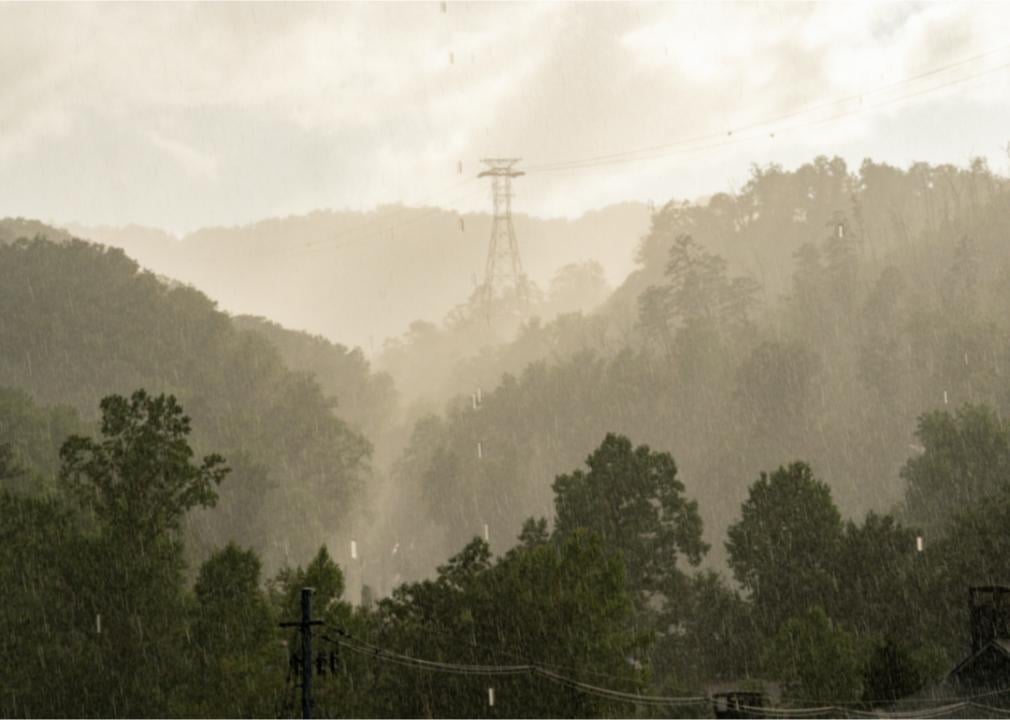
10110010101101 // Shutterstock
Frequent heavy downpours are more common in more places
The conditions that foster heavy downpours and flooding are now intensifying in the Upper Great Plains, the Northeast, and Midwest. According to a report by the U.S. Global Change Research Program (GCRP), those regions specifically are experiencing a more than 30% increase in “very heavy precipitation events” compared to 1901 to 1960 levels, although “the heaviest rainfall events have become heavier and more frequent, and the amount of rain falling on the heaviest rain days has also increased” across the entire country.
You may also like: From Hypatia to Christina Koch: 50 groundbreaking women of science
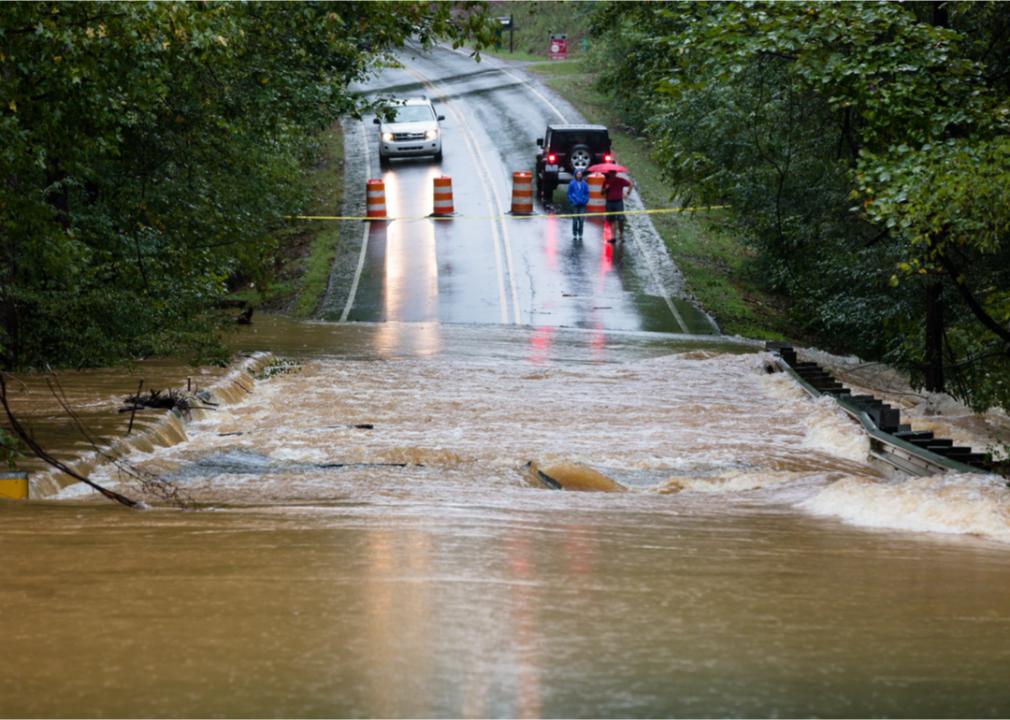
Jeremy Warner // Shutterstock
Flash floods will be more common
According to the Global Change Research Program, floods killed 4,586 people in the United States between 1959–2005. The most deadly floods of all are flash floods, which occur in steep watersheds. One of the key drivers of flash floods is intense rainfall, like the kind currently driven by climate change.
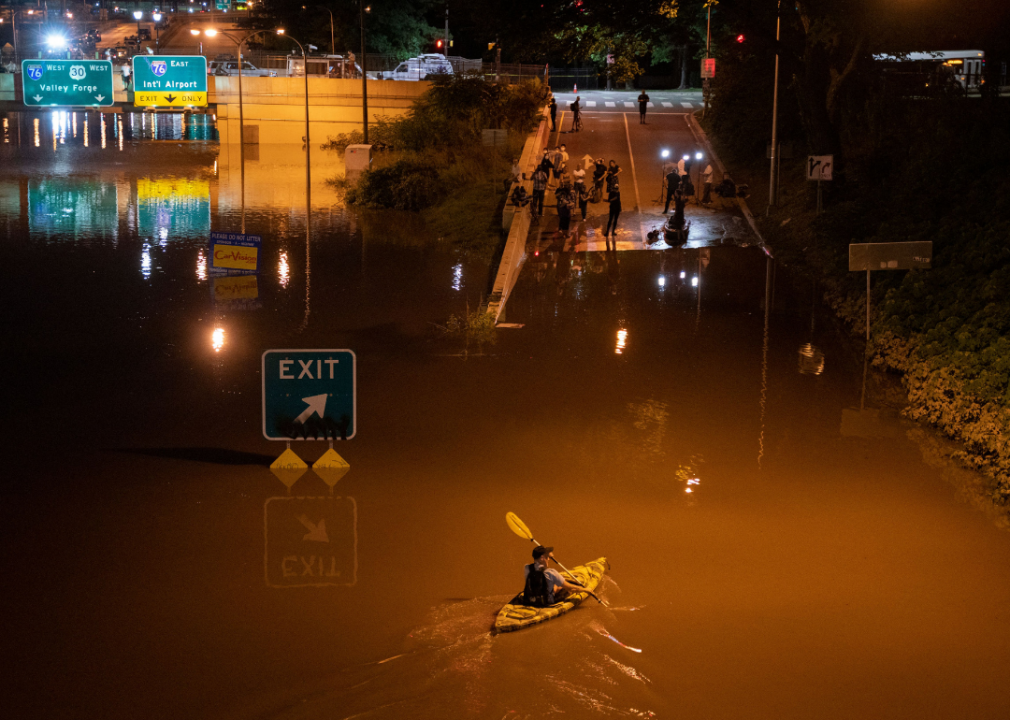
BRANDEN EASTWOOD/AFP via Getty Images
Expect more urban flooding
The effects of climate change-driven flooding are not relegated to the coasts, and inland and flash flood-prone watersheds. Short bursts of heavy precipitation can also result in urban flooding, which occurs when storm drains are pushed past capacity. According to the Global Change Research Program, urban flooding is expected to become more frequent in U.S. cities, as significant rain events continue to grow in frequency and ferocity.
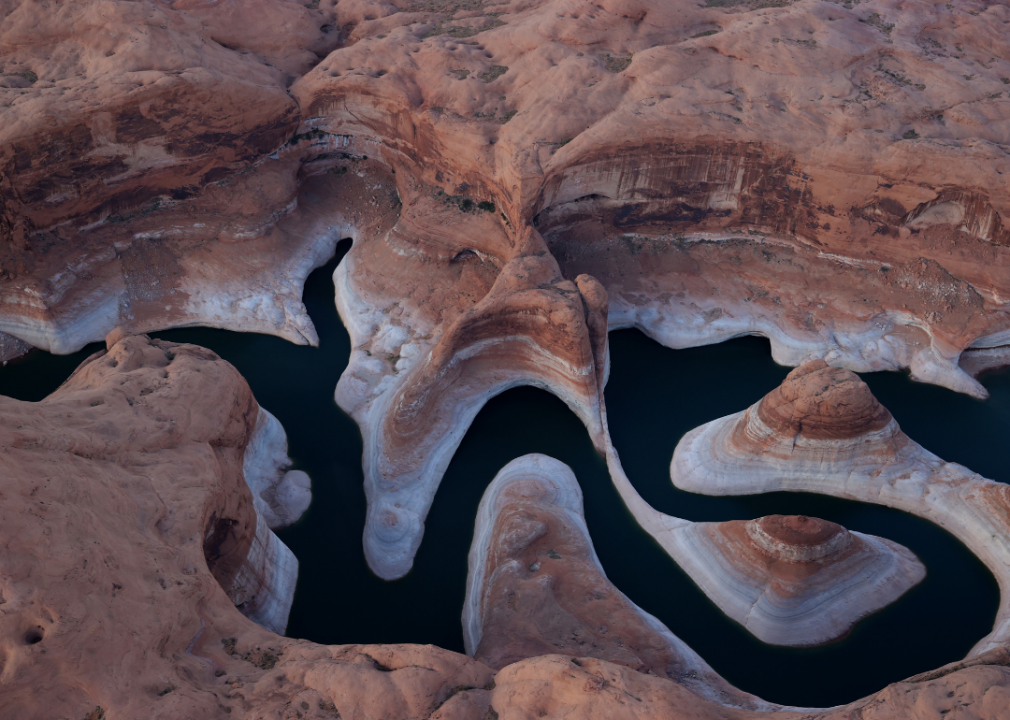
Justin Sullivan // Getty Images
River water quantity and quality is suffering
Between decreasing precipitation in the Southwest and increasing precipitation in much of the rest of the country, water levels in U.S. rivers are already changing and will continue to change moving forward, according to research by American Rivers. This affects not only fish and other animals that live in and around rivers, but people who rely on them for drinking water. Reservoirs on the Colorado River, for example, already lose 1.8 million acre-feet of water per year—that’s 13% of the river’s annual flow lost to evaporation. Extreme precipitation caused by climate change also will lead to a reduction in river water quality since significant drenching rains increase polluted runoff from farms and other agricultural operations into waterways.
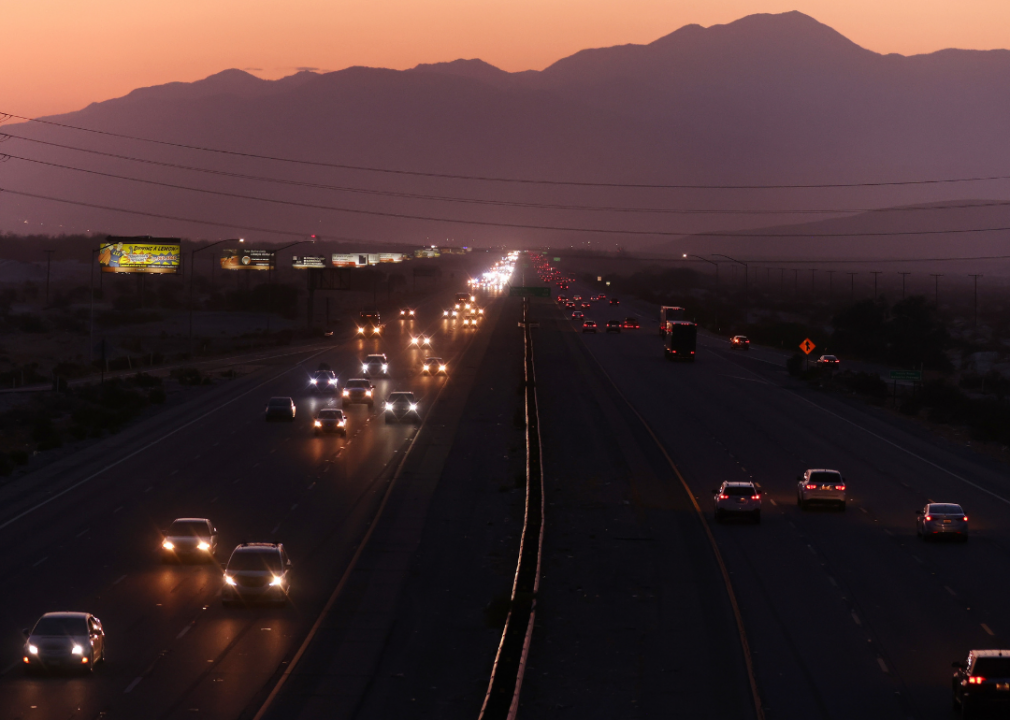
Mario Tama // Getty Images
Heat waves will be longer, hotter and more frequent
One of the most obvious, but most consequential, implications of global warming is a rise in heat waves, the most deadly extreme weather phenomenon in the United States, which kills about 600 people per year. According to C2ES, the world is experiencing fewer cold days and more hot days. In the 1950s in the United States, the ratio of record hot days to record cold days was 1 to 1. Over the past decade, there have been two record hot days for every record cold day. By midcentury, the ratio is expected to be 20 to 1, with the South likely to experience three times the number of days over 95 degrees annually.
You may also like: States doing the most for a clean energy future

